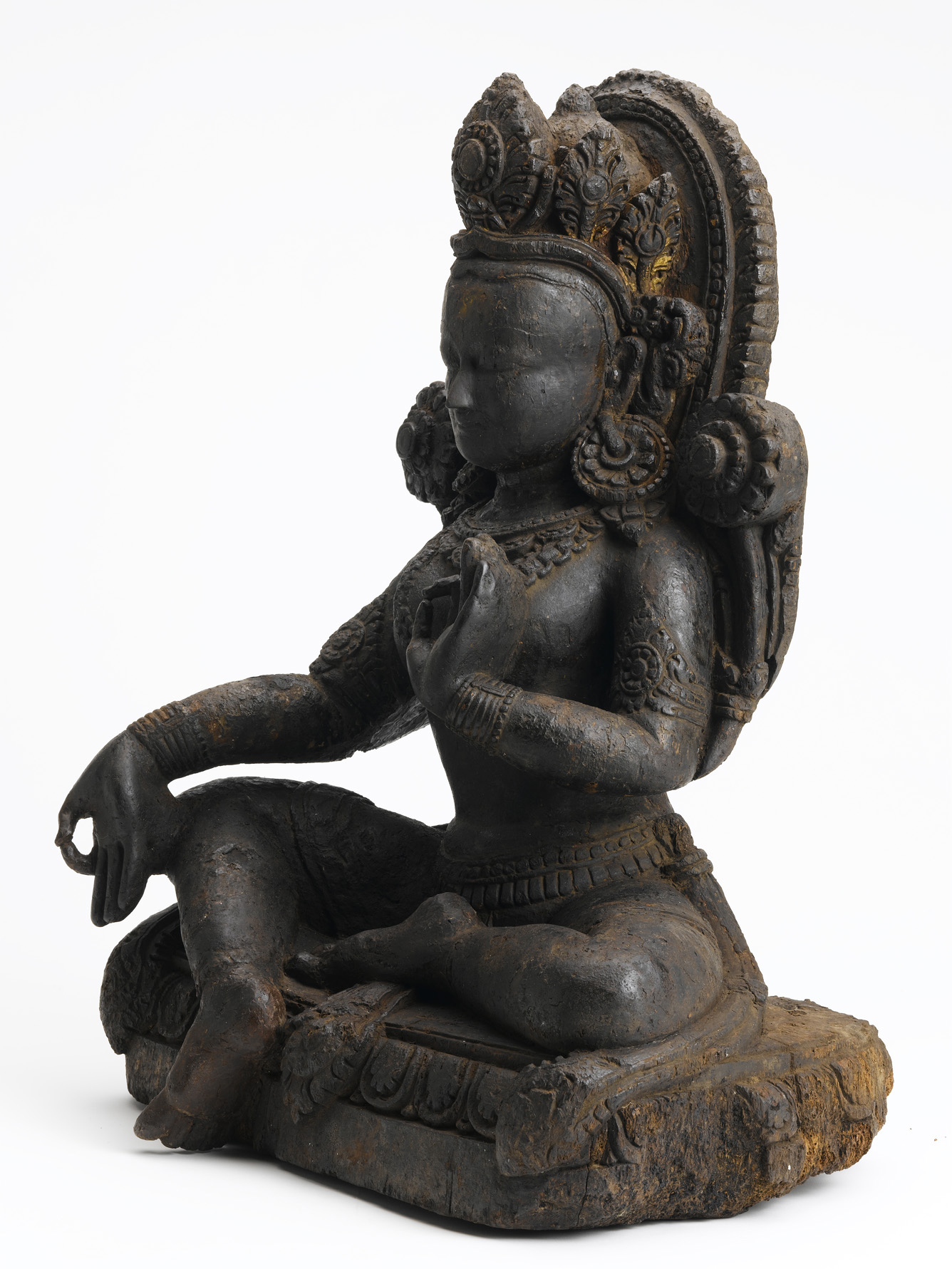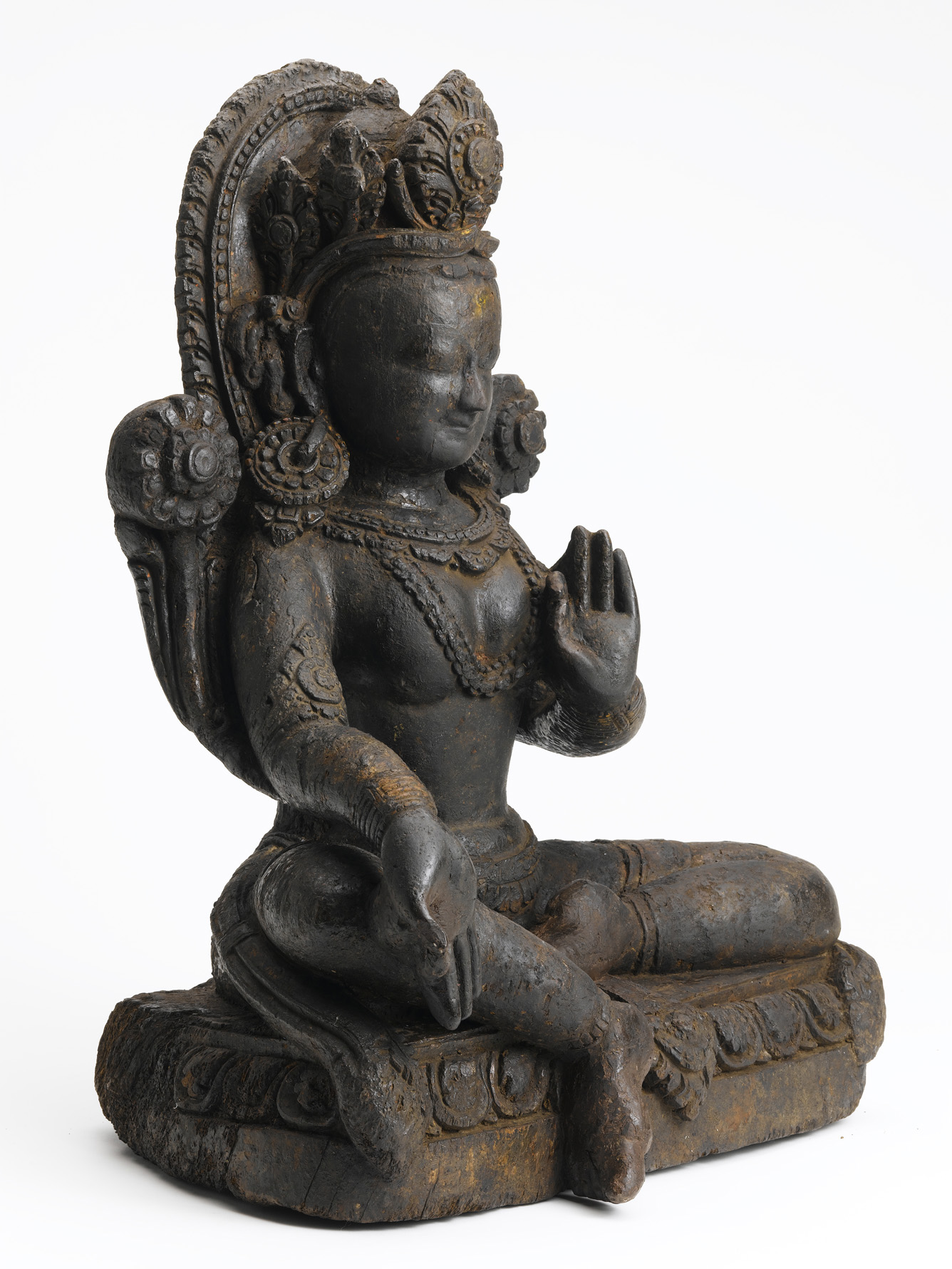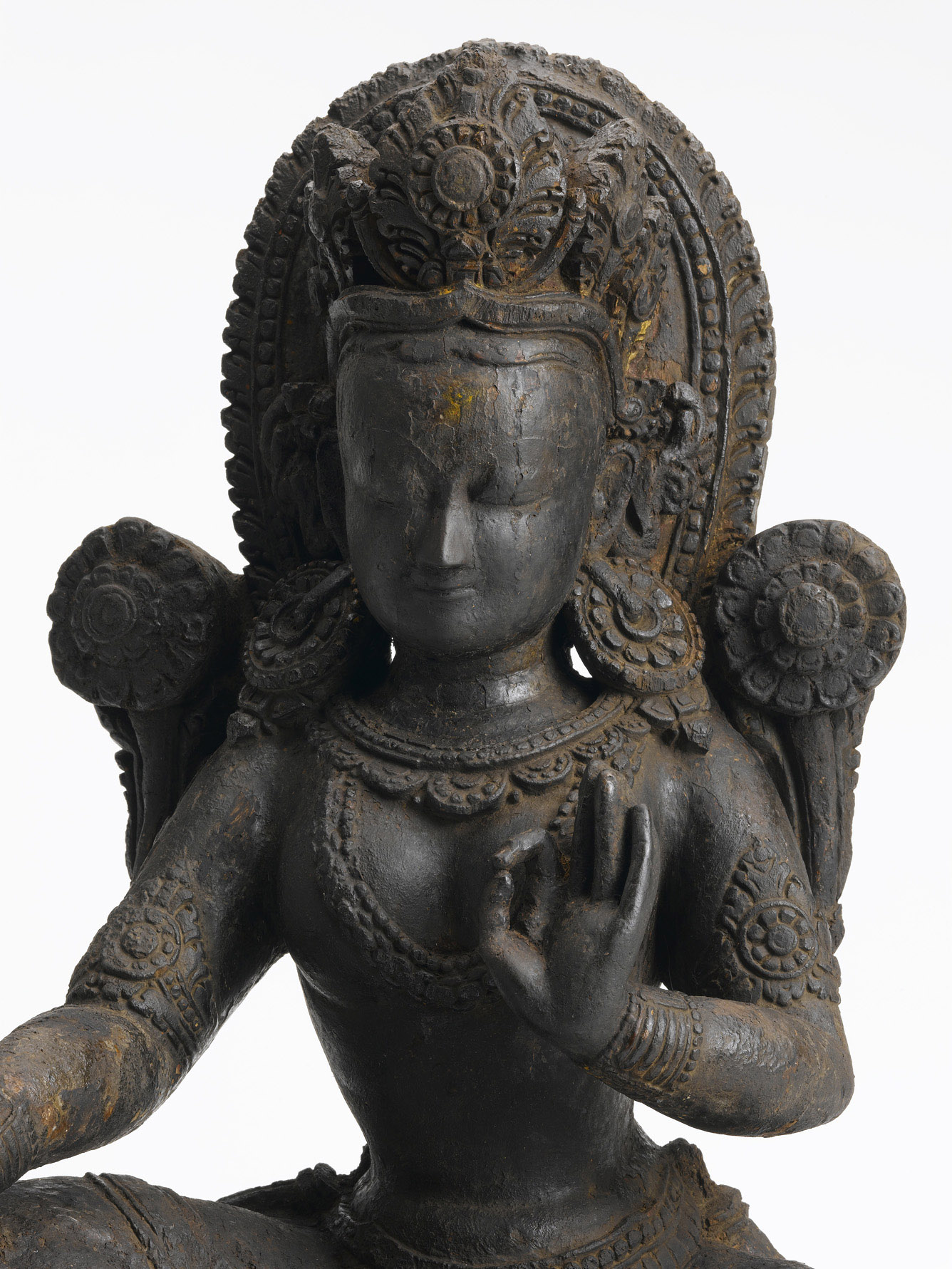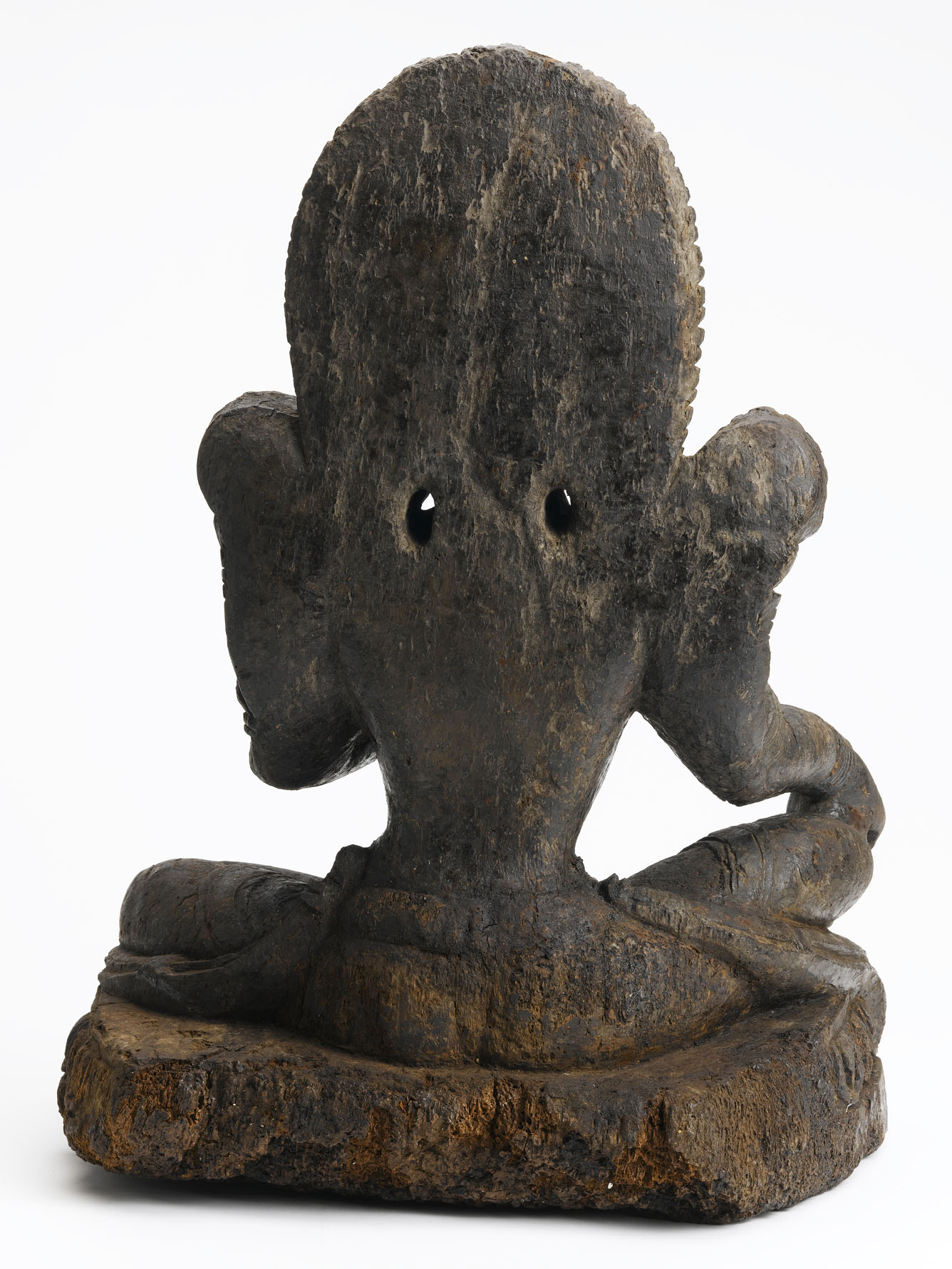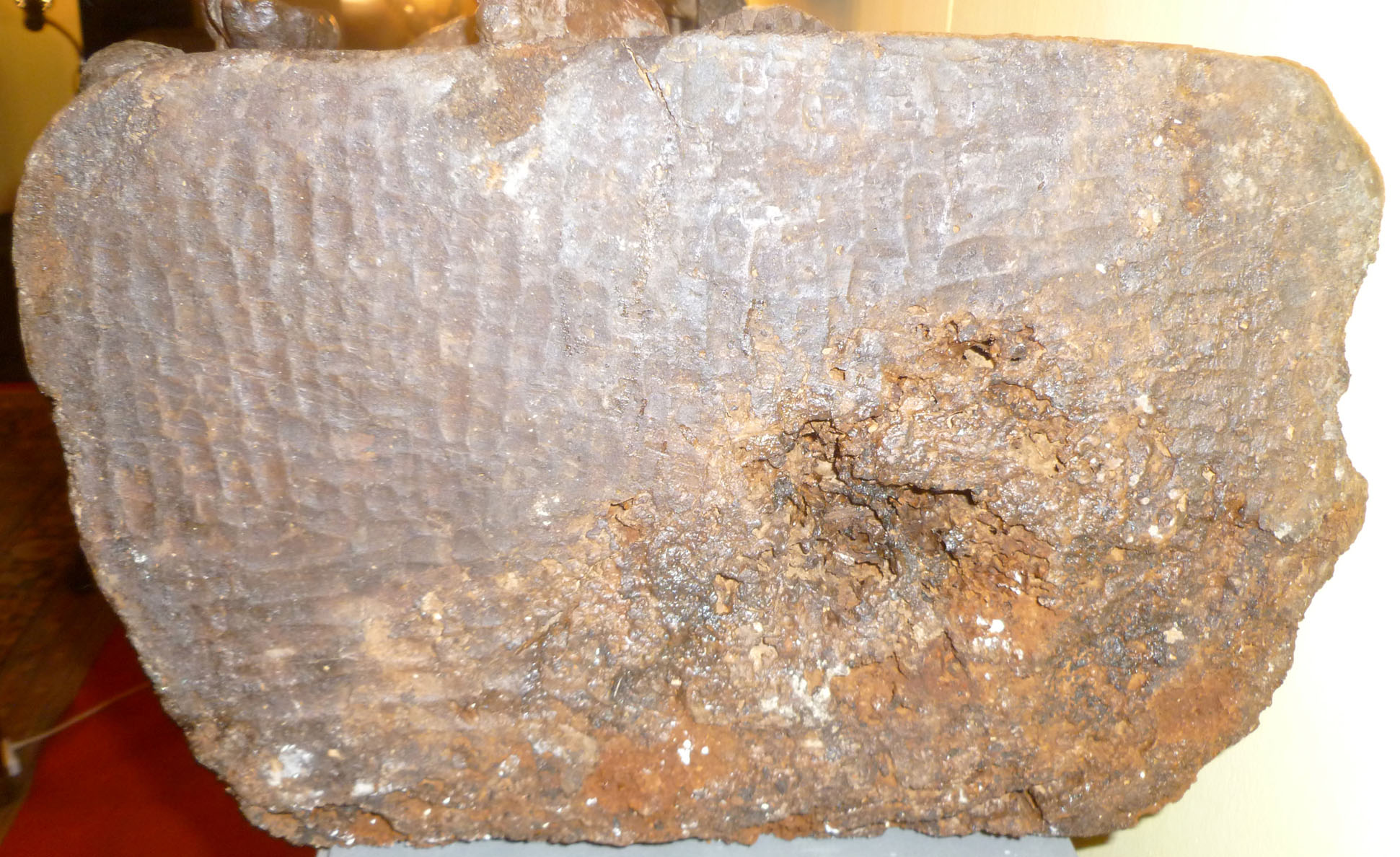Green TaraNepal - wood - height 68cm - 17th centuryIn Hindu religious traditions, goddesses have the twofold role of givers and destroyers of life. Similar functions were attributed to Buddhist goddesses, represented in peaceful forms, like Târâ, as well as in wrathful forms, like Shrî- matî , both having the role of protectresses. Female figures with Bodhisattva and Buddha rank appear in the tantric texts of late Buddhism, where the impor- tance of the female role was slow in asserting itself. In- deed, the most ancient of sources denied women the chance to aspire to the condition of Buddha in their own lifetime. In the Hindu pantheon Târâ (literally “Star”) is one of the names of Kâlî, Shiva’s terrible consort. In the Buddhist pantheon, in which she was incorporated, her name is understood, by a somewhat strained etymology, as meaning “Saviouress” (1). The success of the Buddhist Târâ derives from her soteriological nature and redeeming value for worshippers, whom she protects against many mis- fortunes. Moreover, she is associated with the most famous Bodhisattva of the Buddhist pantheon, Padmapâni Avalokiteshvara. Many manifestations of Târâ exist, but the most common are the White and Green ones, the latter being particularly revered by travellers for her ability to protect them against eight dangers: lions, elephants, fires, snakes, bandits, prisons, floods and demons. The White Târâ, together with the Buddha Amitâyus and the goddess Ushnîshavijayâ, forms the triad of “Long Life”.
|

